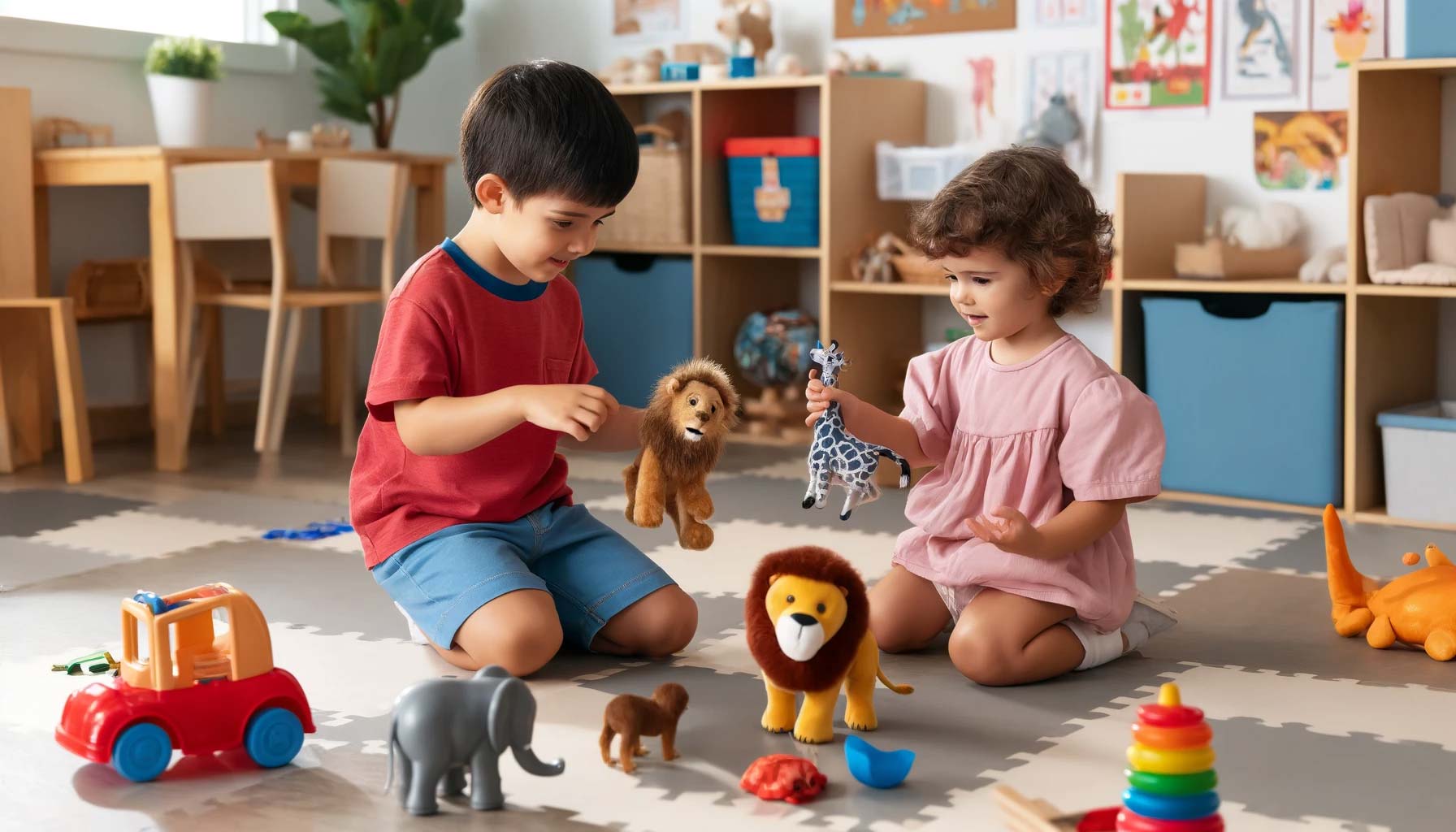Enhancing Learning in Young Minds
What first piqued my interest in Working Memory over ten years ago, was the flurry of research consistently showing that it is the single biggest predictor of academic achievement there is.
This led to some big and bold statements, with some calling Working Memory the ‘new IQ’ (and writing books with similar titles). Why? And is it really that important? Down the Working Memory rabbit hole I went. I wanted to know all the details, components, factors which facilitate or hinder Working Memory’s development, and learnt along the way how deeply it impacts not just children’s learning, but provides important foundations for speech and language development.

Two Key Parts Of Working Memory We Need To Know
A key thing I want us to understand is that Working Memory isn’t a single ability, but made up of several components. For us, with the aim of helping every child to achieve their fullest potential, two parts of Working Memory are most important to know about:

the 'Phonological Loop' (you may hear some call this Short-Term Verbal Memory)
= Ability to store information we hear for a few seconds

the ‘Central Executive’
= Ability to process information in mind
The Phonological Loop / Short-Term Verbal Memory
The Phonological Loop is our capacity to keep in mind information we hear for up to a few seconds. It’s like a notepad we can temporarily store information we hear in. But temporary means that it’s also a ‘use it or lose it’ ability in that it quickly fades after a few seconds. Anything we remember after this time is usually either being rehearsed (like trying to remember a telephone number before we can write it down) or has moved to our long-term memory (e.g. like remembering what someone said their name was).
While we’re not often aware of our Phonological Loop, it’s always there in the background, ticking over. Every sentence, note in music, random noise we consciously hear is stored there for at least a few seconds. We only really become aware of this when either it’s stretched (e.g. “can you go and get these five items from another room…”), or we want to ‘replay’ something we just heard (e.g. normally just before we then ask “sorry, what did you say?”).

Rehearsing information we hear keeps it in the Phonological Loop
A classic test
A classic test of the Phonological Loop capacity with children (and adults) is to ask them to repeat back a series of numbers in the same order you say them. So, asking a child to repeat “5, 2, 7” shows a good indication of their capacity at this level. The more numbers they can keep in mind and repeat back, the more Phonological Loop capacity they have. You can try this for yourself, asking a colleague/friend to repeat back numbers you say, then asking them to do the same with you. When doing this, you’ll almost ‘feel’ that you have to concentrate to rehearse and repeat back the numbers when they start to get longer.
Importance of the Phonological Loop
With limited Phonological Loop capacity, language development becomes particularly challenging. We see this for a lot of younger children whereby we naturally talk using shorter sentences knowing that, if were to use longer sentences, then they would likely be overloaded and forget much of what was said.
The more children’s Phonological Loop develops and expands, the more language they can keep in mind and make sense of. For some children though, this remains a struggle. Their limited Phonological Loop capacity presents as a bottle neck to their speech and language development, and can make their rate of progress feel like a steep challenge at times.
Perhaps most helpful to know is that the Phonological Loop is incredibly important for both vocabulary development and phonological awareness (i.e. being able to hear the sounds in words, which limits progress in phonics), and can therefore have a big impact on literacy development. If there’s a child in your class who struggles with either of these areas, you can get a rough idea of their Phonological Loop Capacity through the ‘classic test’ mentioned before (i.e. start by asking them to repeat back 2 numbers, and add one each time).

The Central Executive
While the Phonological Loop enables the temporary storage of information we hear, next into the arena comes the Central Executive of Working Memory.
The Central Executive is what puts the ‘Work’ into ‘Working Memory’
The Central Executive is the most important cognitive ability we have, and is what was meant by Working Memory being the ‘new IQ’. In essence, the Central Executive is our ‘thinking capacity’. So, if you’re thinking about anything right now (which hopefully you are when reading this), this is your Central Executive which provides you with this capacity.
As a quick side note, I prefer to talk about ‘thinking capacity’ with others, because it’s a lot more meaningful than ‘Working Memory’ or ‘Central Executive’. When using these other terms, we often find we have to explain what they mean, but ‘thinking capacity’ just makes sense!
Your Central Executive is not just about processing new information that you see or hear, but rather it is the middle ground where you draw in previous memories and understanding to combine this with the new information. This allows you to process information coming from different directions, giving you the opportunity to integrate previous knowledge with new information; to make sense of it, integrate it, ‘think’ about it. Accordingly, the Central Executive of Working Memory is often described as the brain’s “mental workspace”.

Combine new information with previous knowledge to process and think about something

Whole Central Executive capacity illustrated as being different sizes
A classic test
While the classic test of the Phonological Loop is to ask for simple repetition of numbers (i.e. in the same order), to get an understanding of the how much information the Central Executive can process, we often ask children to repeat back numbers; only this time in either in reverse order, or from smallest to biggest. We can maybe even try this for ourselves here. Read the following aloud in order, then close your eyes and try to say them backwards… 4, 2, 9, 5, 1, 7.
For most of us, we would have experienced trying to keep the numbers in mind using our Phonological Loop, then experienced the real ‘thinking’ and processing strains as we used our Central Executive to reorder the numbers. You can feel that mixing bowl of Working Memory starting to become full to the brim with information.
As a side note, what you will have also experienced is that the Central Executive relies a lot on attention. You’ll maybe feel annoyed by that person talking loudly nearby, feel that your embarrassment distracts you, or wish you had the chance for more sleep last night. When we can’t maximise our attention, using our Central Executive capacity becomes much more effortful. In a way, this is the Central Executive capacity getting full of other things – not necessarily that we want in there, but which take up capacity and make the attempt to process and think about something much more difficult.
Importance of the Central Executive
The Central Executive of Working Memory is often described as the foundation upon which learning is built. From following two-step instructions in Reception, to constructing poems in Year 6 or solving complex maths equations in High School, the capacity to process information to greater extents enables children to achieve in these tasks. Of course, there’s many other skills involved within each of these learning contexts, but without the Central Executive available to process the information in mind, each of these becomes incredibly challenging and limited. In essence, the Central Executive enables children to apply what they've learned in a meaningful way.
Thinking about how children’s Central Executive capacity is used within each lesson, every day, it’s understandable why it is one of the greatest predictors of achievement within schools. In fact, children’s Central Executive capacity predicts their future scores on SATS and GCSEs incredibly well. Children’s Central Executive capacity has also been shown to facilitate or limit social skills development, since a child who can reflect on their social experiences needs a greater capacity to process all this complex information to learn from it.
The Evolving Capacity
For most children, their Central Executive capacity naturally grows and develops as they get older. However, when there is limited ‘thinking capacity’ within the Central Executive, as is common with younger children, we see that they can’t integrate their knowledge as easily. We therefore intuitively scaffold by breaking language and learning tasks down into smaller steps, providing singular or simplified concepts one at a time, and giving them ‘thinking time’ for them to be able to process what we’ve said. As children get older, the pace and complexity of our language and learning increases with the assumption that most have a greater Central Executive / Working Memory capacity to be able to cope with this.
Another way of looking at this is that children’s increased Central Executive / Working Memory capacity is one of the biggest reasons why we instinctively communicate and teach a Year 6 class differently to a Year 1 class; we use a lot more visual aids, chunking and repetition with younger children, while using mainly a verbally mediated approach at a quicker pace with older children. This developmental trajectory means that the strategies and methods you employ is often instinctively adapted to meet the changing cognitive landscape of the children in your class. This is often done unconsciously, guided by experience and observation to adapt to the Central Executive capacity of children in your class.
Quick Anecdote: Emily and Jack
Imagine two children in Year 2: Emily and Jack. Jack has a well-developed Central Executive / Working Memory capacity and can easily follow increasingly complex instructions, keep track of multiple tasks, process all the sounds to decode CCVC words, and has spare capacity to think about punctuation when writing. Emily, on the other hand, struggles with tasks that require processing larger amounts of information, needs instructions broken down, is finding it hard to blend CVC words, and struggles to juggle all the processes involved to record his thoughts. Over time, Jack finds academic tasks increasingly manageable and may even excel, while Emily finds school progressively challenging which impacts their self-esteem and makes it hard for them to focus and engage.
A Common Misconception: Working Memory is Long-Term Memory!
I often hear people say that they know they struggle with their Working Memory because they can’t remember things…
Yes... and No
Let’s start with the ‘no’ because… Long-Term Memory is a separate system. It’s like a vast library of stored information. Actually, we’ve two types of long-term memory;
- one for facts called ‘semantic memory’ (e.g. what’s the capital of France) which is like a series of organised books, and
- one for events called ‘episodic memory’ (e.g. can you remember what you did at Christmas last year?) which is more akin to a video library as you can recall the sights, sounds, and even emotions of the event.
In comparison, the Central Executive of Working Memory is like the author behind each of those books being stored in the library; it thought about and created each book (piece of information), but itself isn’t storing all that information (most authors couldn’t recite their books word for word). This is why I generally prefer to use the more casual terms ‘thinking capacity’ or ‘processing ability’ when talking about the Central Executive within the context of learning.
But also, ‘yes’ because… the Central Executive of Working Memory is the gateway to long-term memory. Before we can remember most things, we first have to understand it. The more we can process, make sense of, and connect up our learning, the better our long-term memory for it becomes. When we learn a simple fact in isolation, most of us forget it quickly. However, if we think about it more and integrate this with our prior knowledge, then it’s much more likely that we’ll be able to retain it and retrieve it later.

To learn more about MeeMo, click below:







